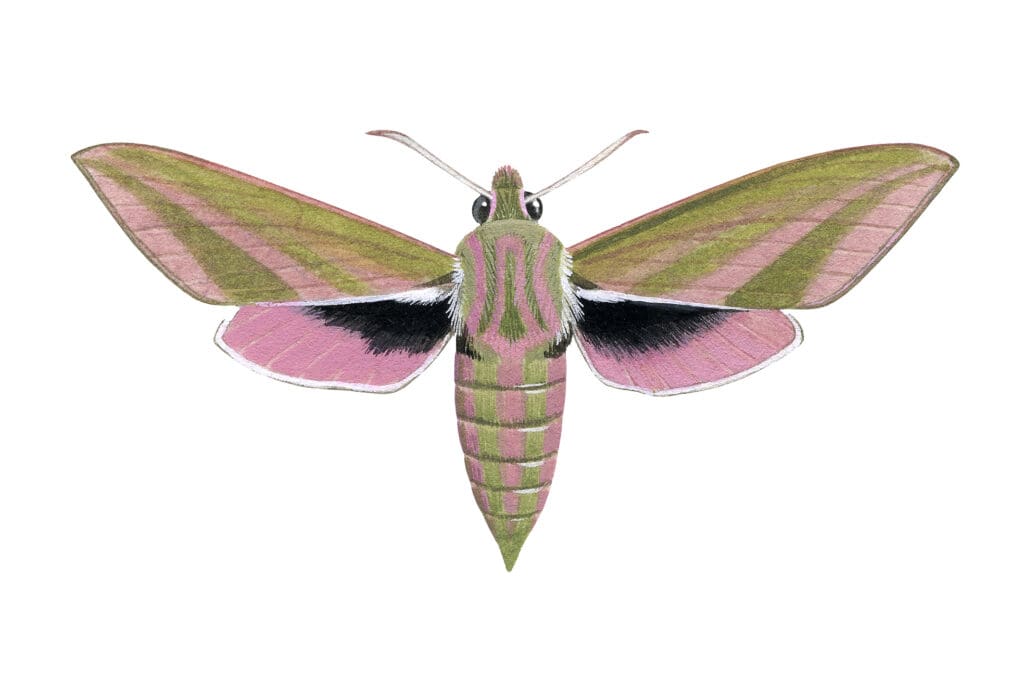What is ranavirus and how can I help minimise spread?
Anneliese van Dijk
Ranavirus is a highly infectious disease which affects amphibians. Adult Common Frogs are typically affected, and the disease can cause localised population declines. Ranavirus may cause reddening or ulceration of the skin, loss of digits or internal bleeding. Affected animals may show no external signs of disease.
Higher temperatures can lead to increased frequency and severity of disease. You can minimise the potential for disease spread by providing amphibians with opportunities to regulate their body temperature. Do this by building ponds with areas of deep water; increasing the shading of your pond and providing log piles; and avoiding introduction of potentially infected material (spawn, tadpoles, amphibians, water or water plants) and allowing new ponds to colonise naturally instead. If you observe any sick or dead amphibians, please report your findings at gardenwildlifehealth.org

Juvenile Starling spotted in Joyce’s garden
What species are these birds I’ve seen in my garden?
Joyce Hayden
This is a Starling. Starlings can sometimes look a bit strange at this time of year. Juveniles start out with grey-brown plumage and pale throats. They then go through a post-juvenile moult between summer and winter. As they develop, young Starlings acquire a dark, spotted body but often retain their brown head, which can lead to confusion. Immatures develop into their adult plumage over the winter, ready for next year’s breeding season. Read more about plumage changes here.
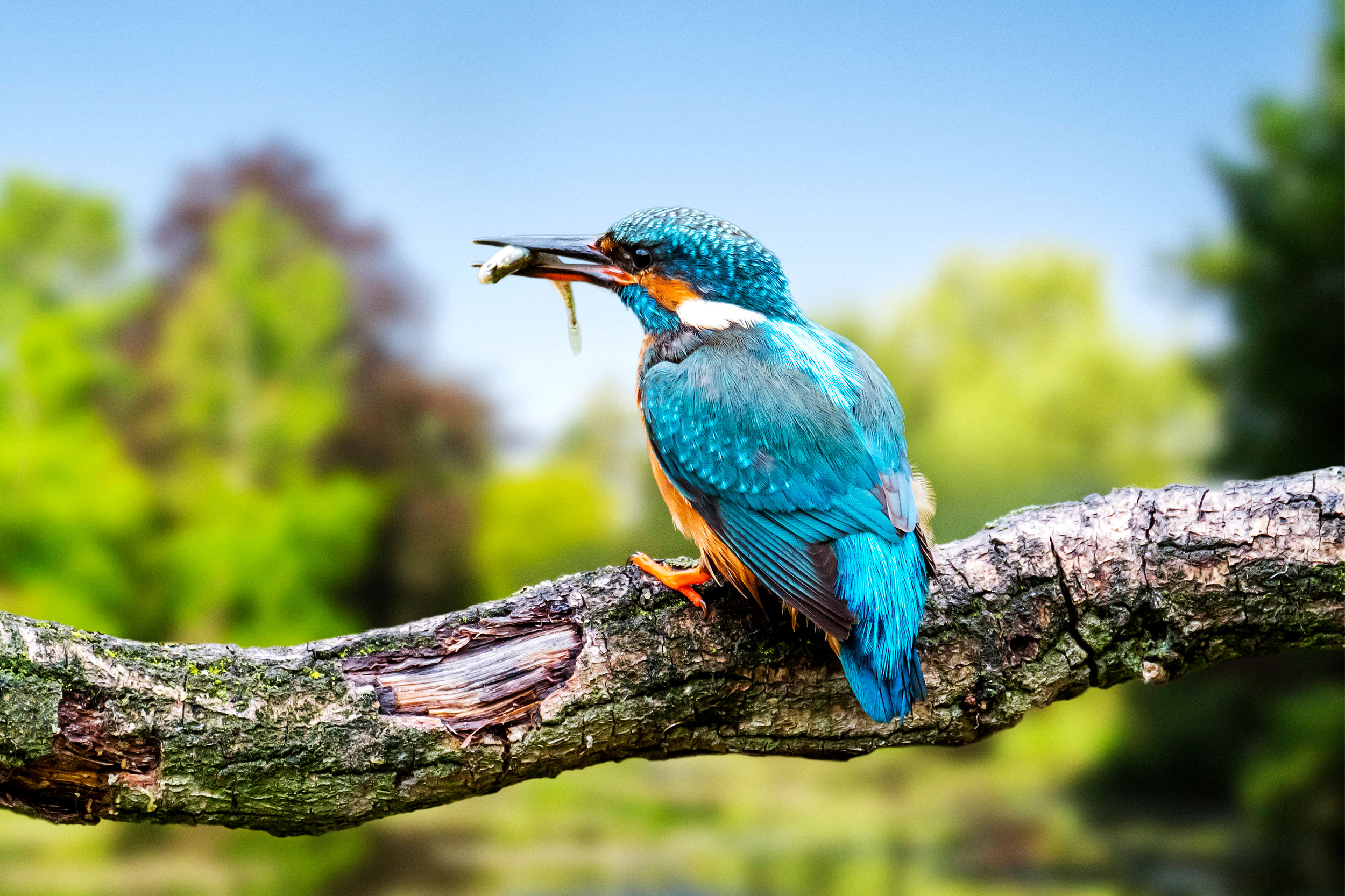
Kingfisher. Photo: Arterra (Getty Images)
Why are Kingfishers blue and orange?
Tom Blades
Kingfishers are one of our most vibrant species with their stunning bright orange, cyan and blue plumage – and they’re even more impressive when we look at how these colours are produced. Whilst their orange colour is caused by tiny pigment granules, the cyan and blue feathers contain no pigments at all and are actually brown! Tiny structural variations in the barbs of Kingfisher feathers cause light to reflect differently, and that’s why we see cyan and blue – this is called structural colouration, making these beautiful birds more colourful than they actually are.
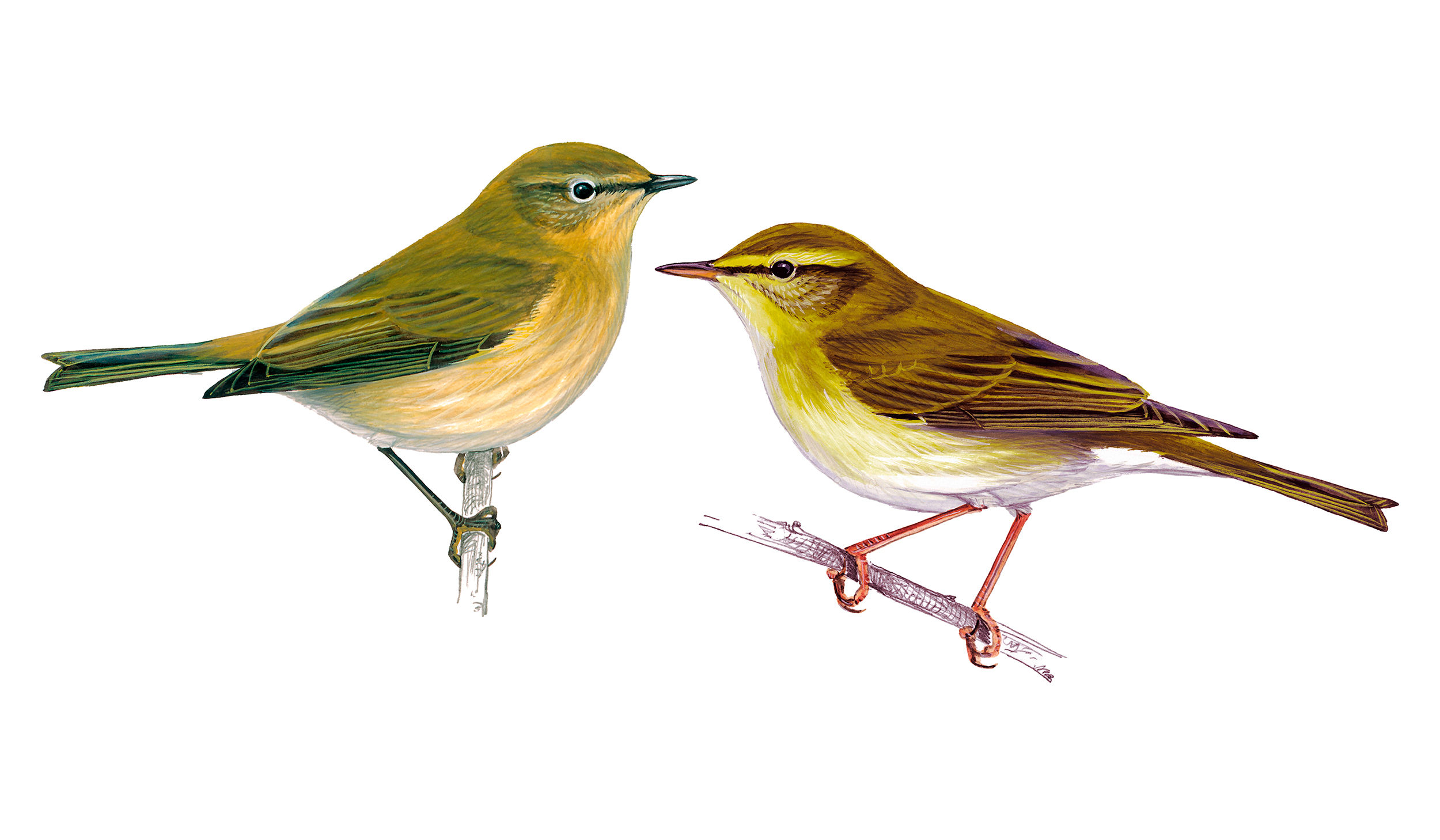
Chiffchaff (left) and Willow Warbler (right). Illustrations not to scale. Illustrations: Mike Langman (rspb-images.com)
Chiffchaff or Willow Warbler?
These two members of the warbler family are spring migrants to the UK and are found in woodlands, scrub, hedges and sometimes gardens. Given their similar appearance and size, it can be hard to identify them, but there are some key features that can help. If you only catch a fleeting glimpse of one, the leg colour and call are two of the quickest ways to distinguish between these two Blue Tit-sized birds. The Chiffchaff is Green-listed, and the Willow Warbler is Amber-listed.
Chiffchaff
- Dark legs
- Pale, less obvious eye stripe
- Greener in colour
- Classic ‘chiff-chaff’ song
- Constantly flick their tails
- Shorter primary feathers mean stumpy wings
Willow Warbler
- Pale legs
- Brighter, yellow eye stripe
- Brighter and yellower in colour
- Whiter under-belly
- More complex song, with a ‘trill’ at the end
- Longer primary feathers mean long-winged appearance
Watch a beginner’s guide to warblers. Video: RSPB
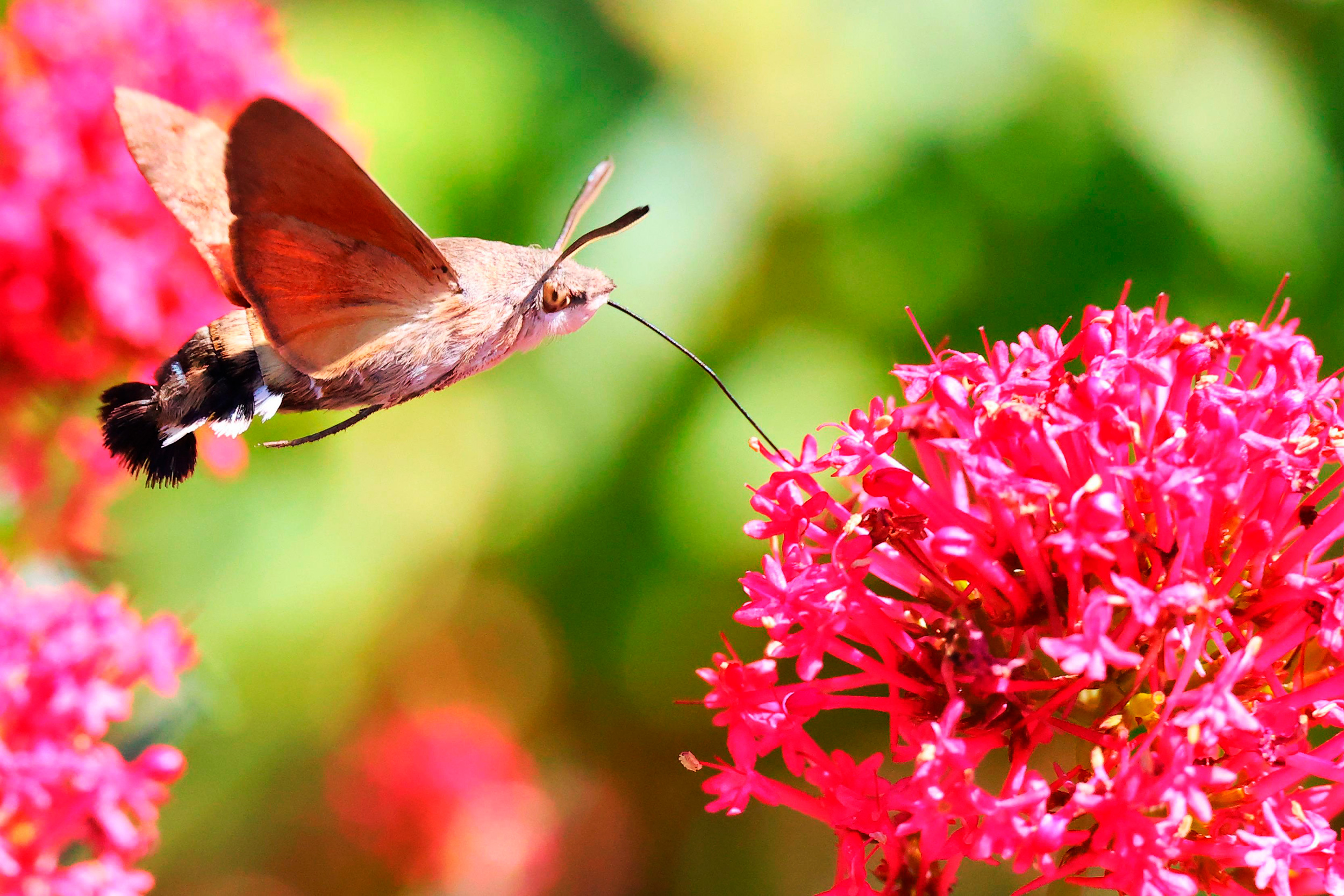
Hummingbird Hawk-moth. Photo: nidpor-StockimoNews (Alamy Stock Photo)
Where should I look out for Hummingbird Hawk-moths?
Angela Phillips
Although Hummingbird Hawk-moths have been known to hibernate in the UK, they are primarily a migratory species and are most often seen in the UK in late summer. These moths can be found throughout the UK but are mainly seen in the south and south-west. Hummingbird Hawk-moths can occur in a variety of different habitats, from coastal sites to woodland edges, parks and gardens. Look for them on sunny days feeding at nectar-rich flowers such as Viper’s Bugloss, Red Valerian, jasmine, buddleia, petunia and Lilac.
How to…
Create a moon garden for nocturnal insects
It’s well known that planting pollinator-friendly plants can be a great way to support insects such as bees and butterflies – but what about our nocturnal visitors? A moon garden is the concept of creating an area that focuses on nocturnal wildlife, with plants selected to encourage night-emerging pollinators such as moths and beetles. You can tailor your garden to nocturnal pollinators by growing light-coloured flowering plants which are visible in low light. Pale petals do a great job of reflecting the moonlight, whilst strong-smelling flowers can attract night-time pollinators, as the insects will be able to detect them even in low light. Plants such as jasmine (Jasminum officinale), light-coloured foxgloves (Digitalis spp.), Lady’s Bedstraw (Galium verum), Oxeye Daisy (Leucanthemum vulgare), White Campion (Silene latifolia) and Meadowsweet (Filipendula ulmaria) are all great options.
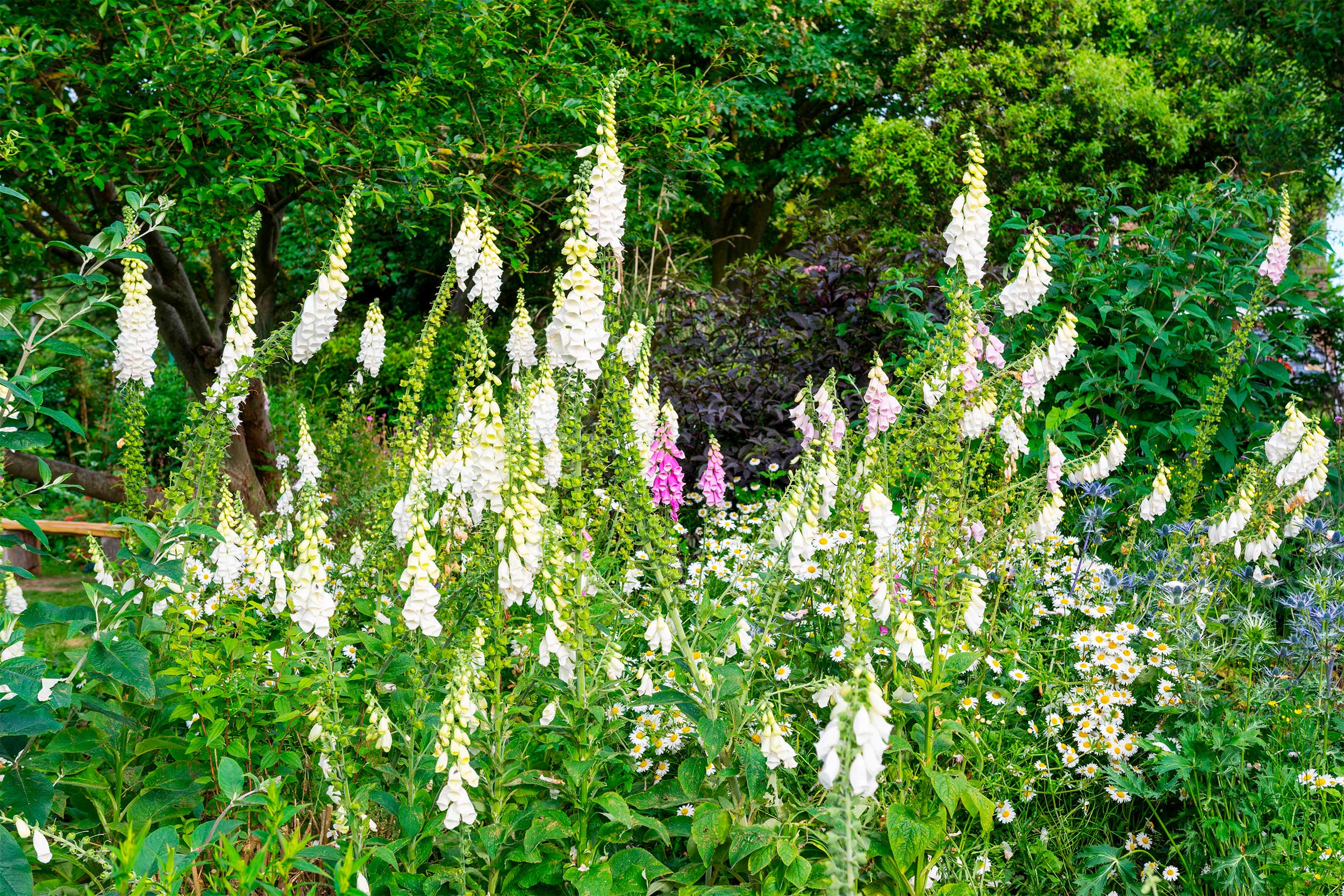

Grow wildlife-friendly plants for moths
There are around 2,500 types of moth in the UK and they’re a key part of the food chain. Sadly, they’re also in decline. But there’s lots we can do in our gardens to boost their numbers.
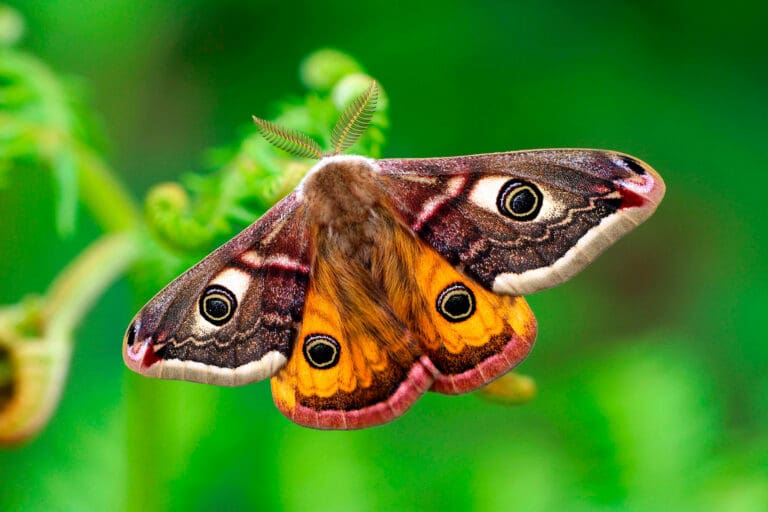
Emperor Moth. Photo: Fabian Harrison (rspb-images.com
You might also like

People power: working together locally can have a global impact

Wildlife in flight
